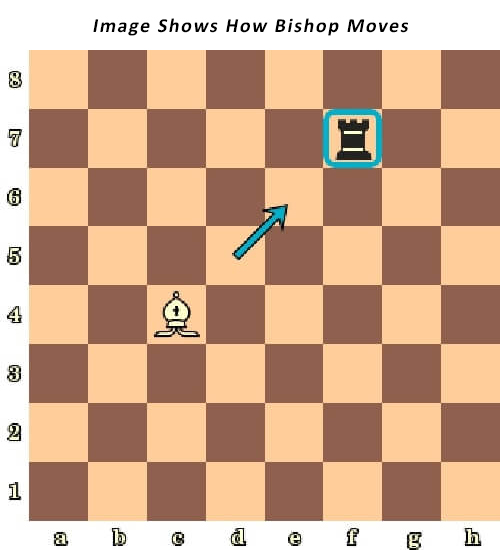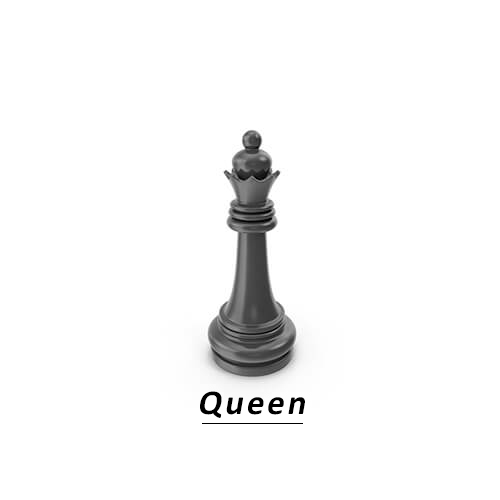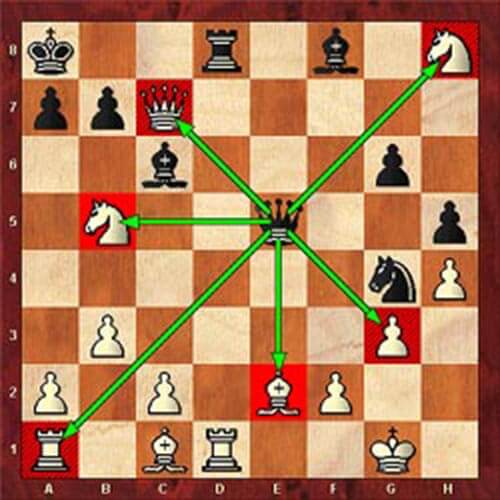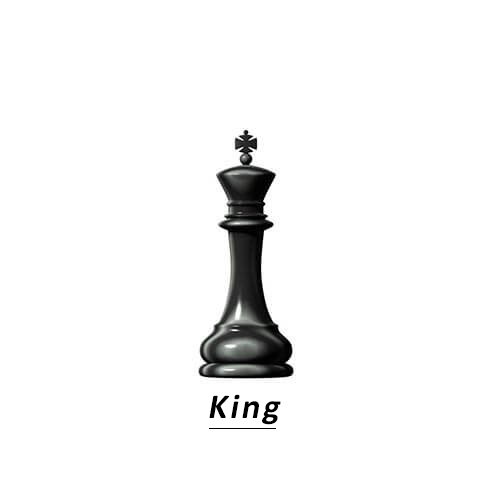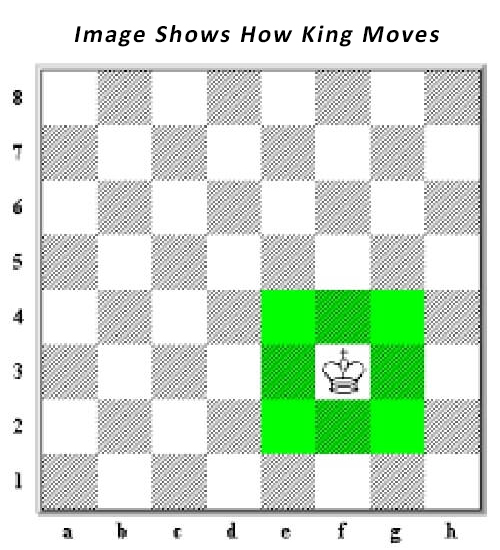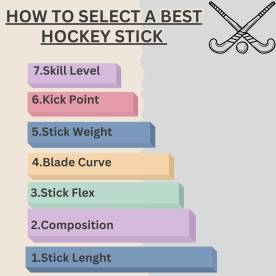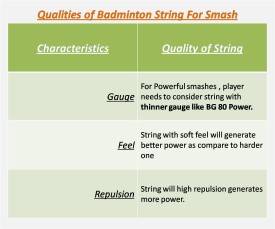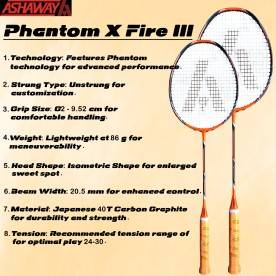Chess is a two-player strategy board game played on a checkerboard with 64 squares arranged in an 8×8 grid. Played by millions of people worldwide, chess is believed to be derived from the Indian game chaturanga sometime before the 7th century. Chess was also called the "Game of Kings" for a very long time in the past, as the Nobel and Kings played it.
The rules of chess may seem convoluted at first, but theyre quite simple. Chess is a board game played between two players– White and Black–who alternate turns. White always moves first, and the players move one piece at a time until one side captures the enemys king.
Its never too late to learn how to play chess - the most popular game in the world! Learning the rules of chess is easy.
The most important thing that one needs to understand while learning to play the game of chess is the pieces that make up the game. It is after you figure out how each piece moves and what their importance is, you can manage to plan through a game. Good chess players do not even have to think how each piece moves, since they already have that at the back of their minds. What they do is plan, even multiple moves in advance, and excel at changing their gameplay according to a given situation.
The elements of chess are classified into below parts:
? Pawns
? Rooks
? Knights
? Bishops
? Queen
? King
Pawns:
"Pawn, the game-changer" – was said by the famous Vishwanath Anand.
It is the smallest but important and effective element of the game. If the pawn is used properly, then it can change the whole game. Its like "Chota packet bada dhamaka" since small things matter a lot. 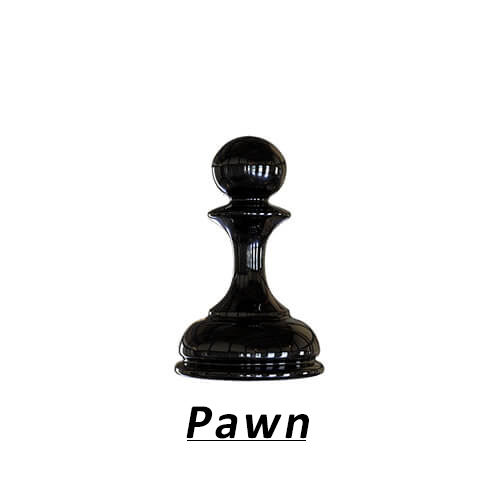
The pawn is the most significant piece in the game of chess, and in most circumstances, also the weakest. Each player begins a game with eight pawns, one on each square of the rank immediately in front of the other pieces.
It is used as a shield in the game for the king. It plays an important role in defence and attacks both.
Placement and movement
Unlike the other pieces, pawns cannot move backwards. Normally a pawn moves by advancing a single square, but the first time a pawn moves, it has the option of advancing two squares. Pawns may not use the initial two-square advance to jump over an occupied square or to capture. Any piece immediately in front of a pawn, friend or foe, blocks its advance.
Capturing
Unlike other pieces, the pawn does not capture in the same direction that it moves. It vertically walks one by one on every eight squares and is also capable of capturing any element diagonally in one step, even king. 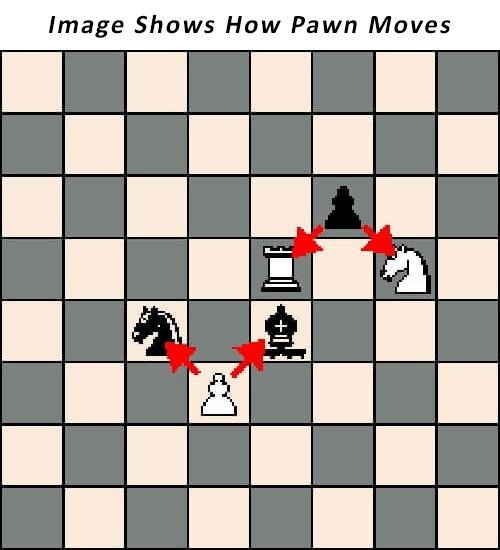
This little element has one special power which can surprise you, and it has the power of occupying other pieces after completing eight squares, even the queen. This is the special power known as "Pawn Power".
Rooks:
There are two rooks in a set of chess. Rooks look like a castle, and in some parts of the world, they are also known as a castle. These are the most versatile pieces of chess. 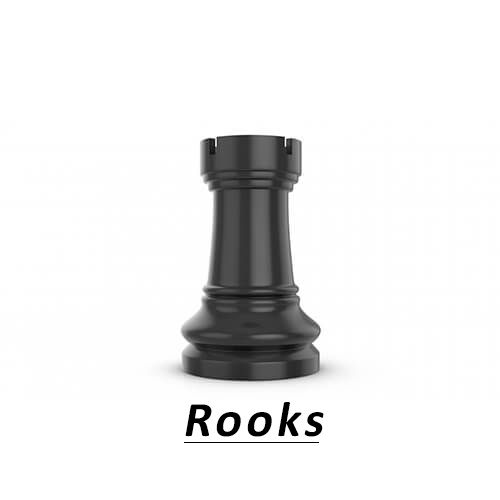
Visualize the Rook as a tower with archers in it, able to shoot across the land. Similar to this metaphor, the rooks move across the board both up and down & side to side.
Placement and movement
The Rook can move only in 4 directions in the game of chess, up & down, and side to side. It means the Rook cannot move diagonally but can move as many spaces up & down or side to side until either reaching the other end of the board or coming in contact with another piece.
Capturing
The Rook can capture any piece within its direct line of movement. It makes the Rook a very powerful piece on the chessboard. The Rook and king also take part in a special move called castling. 
Knights:
There are two knights in every team in chess. A knight is a piece which is represented by the head and neck of a horse. It is located between the rooks and bishops. 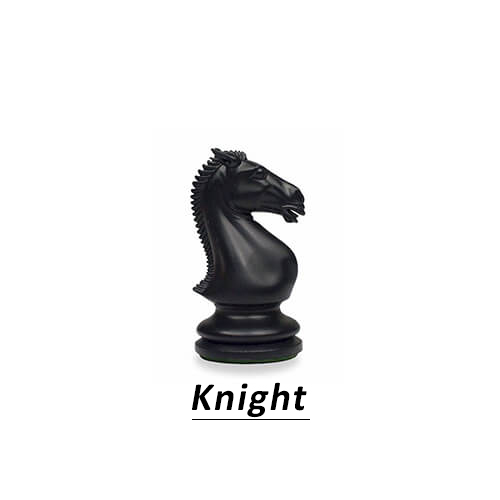
The knight is the trickiest piece in chess! It moves very differently than other pieces and can deliver the dreaded fork or even a smothered mate.
Placement and movement
Compared to other chess pieces, the knights movement is unique: it may move two squares vertically and one square horizontally, or two squares horizontally and one square vertically.
It moves in an L pattern, two squares in one direction and then one square in another. It is the only piece in chess to be able to jump over other pieces. It is also the only piece that can be in a position to attack a king, queen, bishop, or Rook without also being attacked by that piece. Because of this, the knight plays forks well in a game of chess.
Capturing
Knights capture in the same way, replacing the enemy piece on the square and removing it from the board. Knights and pawns are the only pieces that can be moved in the initial position. 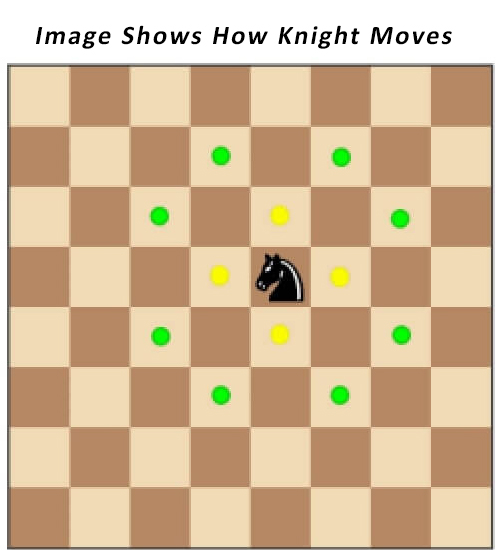
It either moves two squares up or down, and 1 square to the right or left, or moves two squares to the right or left and then moves 1 square up or down.
Bishops:
The bishops are also known as the camels. In each chess team, there are two bishops. They look like minarets and have a pointed top. The two bishops can control a lot of squares. 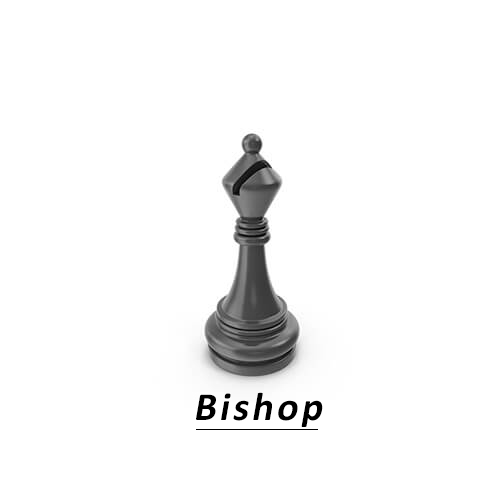
Placement and movement
The bishop moves diagonally and can move as far as a player wants it to unless another piece blocks it. A bishop can never leave the colour of the square that it starts on, and so can only move to 32 squares of the board.
Capturing
It can capture an enemy piece by moving to the occupied square and can move as many squares as it likes, as long as another piece or an occupied square does not block it.
Queen:
The queen is the second-most tallest piece in the whole set. Unlike the king, it does not have a cross on the top. The queen can move any number of spaces in any direction until it reaches the end of the board or tills it kills a piece of the opponents army. It makes the Queen one of the most lethal pieces in the set. Each player starts the game with one queen, placed in the middle of the first rank next to the king. Because the queen is the strongest piece, a pawn is promoted to a queen in the vast majority of cases.
Placement and movement
The queen moves like a bishop and rooks both. However, both players start with one queen each. It can move in any direction with any number of steps.
Capturing
The queen is the most powerful piece in the game of chess, able to move any number of squares vertically, horizontally or diagonally. It can capture any piece on the board in any direction.
King:
The king is less powerful than almost every chess piece, but it is also unique: the king is the only piece that can never be captured! If a king is attacked, it is in "check." If a players king is threatened with capture, it is said to be in check, and the player must remove the threat of capture on the next move. If this cannot be done, the king is said to be checkmate, resulting in a loss for that player. Players cannot make any move that places their king in check.
Placement and movement
It can move left, right, up, down or diagonally. It can only move one square at a time. Thats why it is called the weakest, but highest authority, as well as total game, depend or evolve around it only.
Capturing
King can only capture other pieces with one step of the square but can capture in any direction as well as vertically, horizontally or diagonally.
?Tip to win:
When a players king is under attack and threatened with capture, you say that the king is in check. When in check, that player must take action to avoid having his king captured by moving the king, capturing the attacking piece, or–except in the case of a knight check–blocking the attack. You win the game via checkmate, where you attack your opponents king in such a way that he cannot avoid being captured.
- Cricket
Shop by Category
- Cricket Bat
- Cricket Shoes
- Cricket Accessories
- Cricket Batting Gloves
- Cricket Kit Bag
- Cricket Thigh Guards
- Cricket stumps
- Cricket guards
- Cricket Batting Pads
- Cricket Keeping Gloves
- Cricket Ball
- Cricket Chest Guards
- Cricket Helmet
- Cricket Keeping Pads
- Cricket Bat Grip
- Cricket Clothing
- Cricket Ball Thrower
- Cricket Kit Set
- Cricket Score book
- Cricket Mats
- Cricket Elbow Guards
- Tennis Cricket Ball
- Custom Made Bat
- Cricket Practise Bat
- Badminton
- Tennis
- Table Tennis
- Running $ Jogging Shoes
- skating
Shop By Category
- Swimming
Shop By Brands
- Football
- Squash
Shop By Category
- Carrom
Shop By Category
- Boxing
Shop By Category

